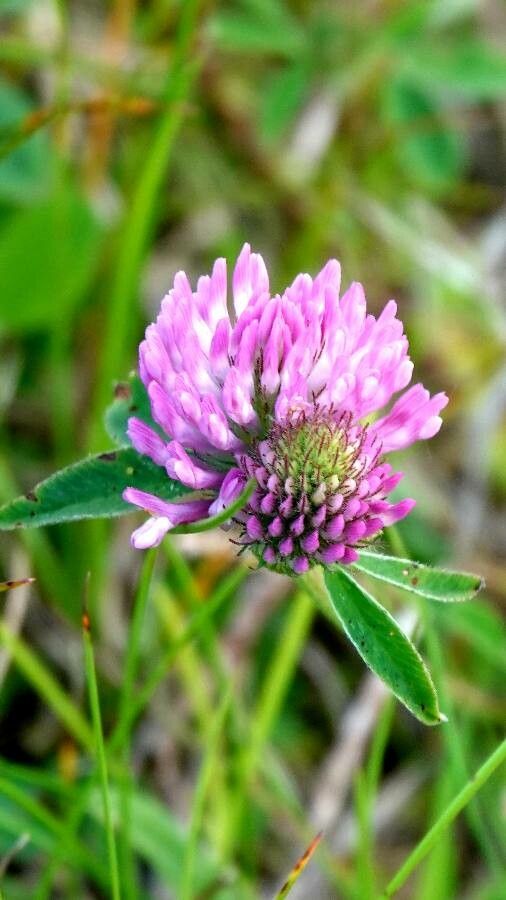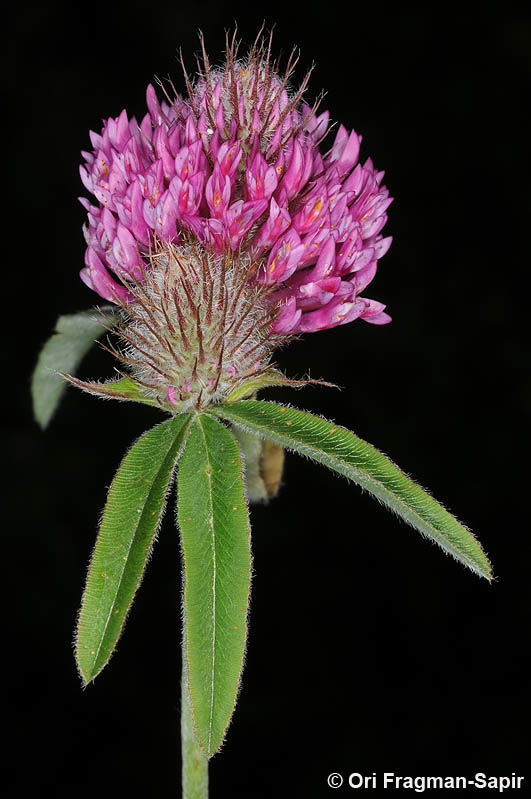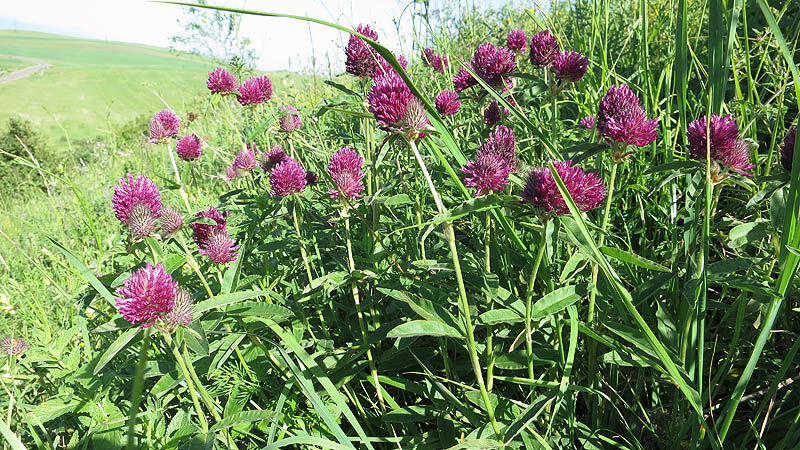Alpine Clover
trifolium alpestre
Also known as: ["Alpine Trefoil","Mountain Clover"]
Overview
A perennial herbaceous plant native to alpine regions, known for its trifoliate leaves and small, spherical flower heads.
Benefits & Perks
["wildlife attractant (bees, butterflies, birds)","drought tolerant","shade tolerant"]
Botanical Classification
| Phylum: | Magnoliophyta |
| Class: | Magnoliopsida |
| Order: | Fabales |
| Family: | Fabaceae |
| Genus: | Trifolium |
| Botanical Name: | Trifolium alpestre |
Plant Characteristics
Basic Information
- Category: Flowers
- Suitable Location: rock gardens, meadows, or open areas with good air circulation
- Suitable For:
- Is Weed: No
- Allergenicity: low
Environmental Needs
- Climate: {"temperatureRange":"0–30°C"}
- Hardiness: {"zones":"4–8"}
- Misting: rarely required, only if ambient humidity is very low
- Drainage: Fast-draining to prevent root rot.
- Soil Type: Well-draining, loamy soil with added organic matter. A mix of potting soil, perlite, and compost works well.
Maintenance Level
- Maintenance Level: low
- Toughness Level: moderate
- Pruning Frequency: Annually in early spring or after flowering to remove spent blooms and encourage new growth.
- Pruning Intensity: Light to moderate. Remove no more than one-third of the plant at a time.
Care Details
Ideal Sunlight Coverage:
Full sun (6–8 hours/day) in cooler climates; partial shade in hot regions to prevent scorching.
Sunlight Tolerance Tips:
Acclimate plants gradually to intense sunlight; provide shade during peak afternoon heat in hot climates; ensure good air circulation to prevent sunburn.
Care Requirements
Care Difficulty
easymoderate
Sunlight
full sun to partial shade
Rotate plants for even light exposure; use shade cloth in extreme heat; avoid direct midday sun in summer.
Watering
every 7–10 days during active growth, reduce in winter
Water thoroughly but infrequently; ensure soil dries slightly between waterings; avoid waterlogging.
Soil
well-drained, loamy soil with moderate organic content
pH: Slightly acidic to neutral (pH 6.0–7.0).
Use a mix that doesn’t compact easily; ensure pots have drainage holes; avoid heavy clay soils.
Temperature
Prefers cool to moderate temperatures (60–75°F or 15–24°C). Tolerates cold but may struggle in prolonged heat.
Protect from frost; avoid sudden temperature swings; maintain consistent cool conditions for best growth.
Fertilizing
every 4–6 weeks during spring and summer
Fertilize lightly to avoid excessive foliage growth; stop feeding in fall to prepare for dormancy; water before applying fertilizer.
Propagation
Methods
Stem cuttings or division. Stem cuttings are more common for home growers.
Step-by-Step Propagation Guide
- Take 4–6 inch cuttings.
- Remove lower leaves.
- Dip in rooting hormone.
- Plant in medium.
- Keep moist and warm.
Best Time: Early spring or late summer when the plant is actively growing but not under stress.
Environment
Warm (65–75°F or 18–24°C), humid, and bright indirect light. Protect from direct sun.
Medium
Well-draining mix of peat, perlite, and sand or cactus mix.
Hormone
Rooting hormone is recommended to improve success rates.
Timeline
Roots typically form in 3–6 weeks; plants may take 2–3 months to establish.
Tools Needed
Pruners, rooting hormone, small pots, well-draining medium, misting bottle.
Quick Tips
Use healthy, non-flowering stems; maintain high humidity with a plastic cover; avoid overwatering.
Pruning & Repotting
Pruning Guide
Method
Pinch back tips for bushier growth; deadhead spent flowers; trim leggy stems to promote compactness.
Pruning Plan
Prune to maintain shape, encourage bushier growth, and remove dead or diseased parts. Light pruning is usually sufficient.
Tools
Pruning shears, clean scissors, gloves.
Checklist
Sterilize tools; prune during dormancy or active growth; remove dead/diseased parts; shape evenly.
Repotting Guide
Best Season
Early spring before new growth begins.
Pot Size
Increase pot size by 1–2 inches in diameter.
Method
Gently remove plant; trim any dead roots; place in a slightly larger pot with fresh, well-draining soil; water lightly.
Suggestions
Repot every 2–3 years or when roots fill the pot. Trifolium alpestre prefers slightly crowded roots but benefits from fresh soil.
Checklist
Choose appropriate pot size; use fresh soil mix; handle roots gently; water after repotting.
Advanced Care Tips
Watering Mastery
Watering Checklist
Check soil moisture before watering; water deeply; ensure drainage; avoid wetting leaves.
How to Apply Water Properly
Water at the base of the plant, ensuring moisture reaches the root zone. Water early in the morning to minimize evaporation and fungal issues. Allow excess water to drain away completely.
Watering Schedule Tips
Water deeply once every 7–10 days during active growth, reducing frequency to every 2–3 weeks in winter. Adjust based on rainfall and soil moisture.
Soil Improvement
Add perlite or sand for drainage; incorporate compost for fertility; ensure soil is loose and airy.
Temperature Stress Management
Signs of Temperature Issues
Wilting, yellowing leaves, stunted growth, or leaf drop in extreme heat; browning leaf edges in cold stress.
Cold Stress
Low temperatures slow growth and can cause root damage if soil freezes. Frost can damage foliage.
Solution: Mulch heavily to insulate roots; move potted plants indoors or to a sheltered location; use frost cloth for protection.
Hot Stress
Excessive heat can lead to wilting, leaf scorch, and reduced flowering. Plants may go dormant.
Solution: Provide shade during peak heat; increase watering frequency; improve air circulation; mulch to retain soil moisture.
Fertilizing Guide
Fertilizing Checklist
Use diluted fertilizer; apply during active growth; avoid winter feeding; rinse tools after use.
Fertilizing Method
Use a balanced, water-soluble fertilizer diluted to half strength every 4–6 weeks during growing season (spring/summer). Avoid fertilizing in winter.
Common Problems & Solutions
Toxicity Warning
Cats
Non-toxicTrifolium alpestre is not considered toxic to cats. It is not known to cause adverse effects when ingested by cats in small quantities.
⚡ Toxic If:
Generally non-toxic
Dogs
Non-toxicAlpine clover is not considered toxic to dogs. It is commonly found in pastures and is generally safe for dogs to ingest in small amounts.
⚡ Toxic If:
Generally non-toxic
Humans
Non-toxicTrifolium alpestre, commonly known as alpine clover, is not considered toxic to humans under normal circumstances. It is often used as forage for livestock and is generally safe for human consumption in small quantities.
⚡ Toxic If:
Generally non-toxic
Frequently Asked Questions
Q: Is Alpine Clover suitable for garden borders?
A: Yes, it is well-suited for garden borders due to its compact growth habit and attractive flowers.
Q: Does Alpine Clover require full sun?
A: It prefers partial shade but can tolerate full sun in cooler climates.
Q: Can Alpine Clover be grown in containers?
A: While possible, it is best suited for garden beds due to its spreading nature.
Quick Reference
| Family: | Fabaceae |
| Care: | easy |
| Light: | full sun to partial shade |
| Water: | every 7–10 days during activ |
Get Expert Care Tips
Download the Plantious app for personalized care reminders and plant identification!
Google Play App Store








